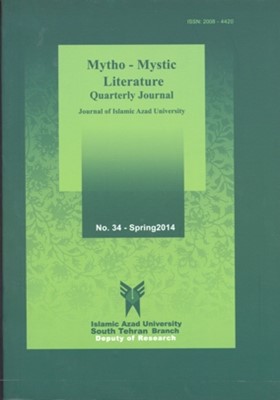-
-
List of Articles
-
Open Access Article
1 - Burning the Clock
Khadijeh Hajiyān Saeed Bozorge-Beigdeli -
Open Access Article
2 - "Myth of Trial by Ordeal" and Fire in Shāhnāmeh
Naqmeh Dādvar -
Open Access Article
3 - Dreams of Mystics in Risāla Qushayriyya: An Analysis
Ahmad Rezāee Bahā-al-din Eskandarī -
Open Access Article
4 - Psychological Analysis of the Story of Siyāvash Based on Freudian Pattern of "Structure of Mind"
Mohammadreza Rozbeh Kayānoosh Dāniyāri -
Open Access Article
5 - Inexplicability of Mystical Experience Regarding Rūmi's Thoughts about Form and Meaning
Manzar Soltānī Saeed Poorazimī -
Open Access Article
6 - “Suluk” in the Story of Sheikh Sanān and Siddhartha: A Comparative Analysis
Eshāq Toqyānī Zohreh Moshāverī -
Open Access Article
7 - The Mythical Analysis of Suvashun: the 1953 Iranian Coup D ' état
Mohammad Alijāni Hoseinalī Qobadī Saeed Bozorg Bigdelī -
Open Access Article
8 - Satire: Medium of Protest in Mysticism and Surrealism
Nāser Alizādeh Vidā Dastmālchī -
Open Access Article
9 - The Development of Solitude in Islamic Mysticism
Zakiyyeh Fattāhi Shahram Pazooki -
Open Access Article
10 - Shoshtari and His Role in Development of the Arabian Mystical Poetry
Seyed Mahdi Masbuq
-
The rights to this website are owned by the Raimag Press Management System.
Copyright © 2021-2025







